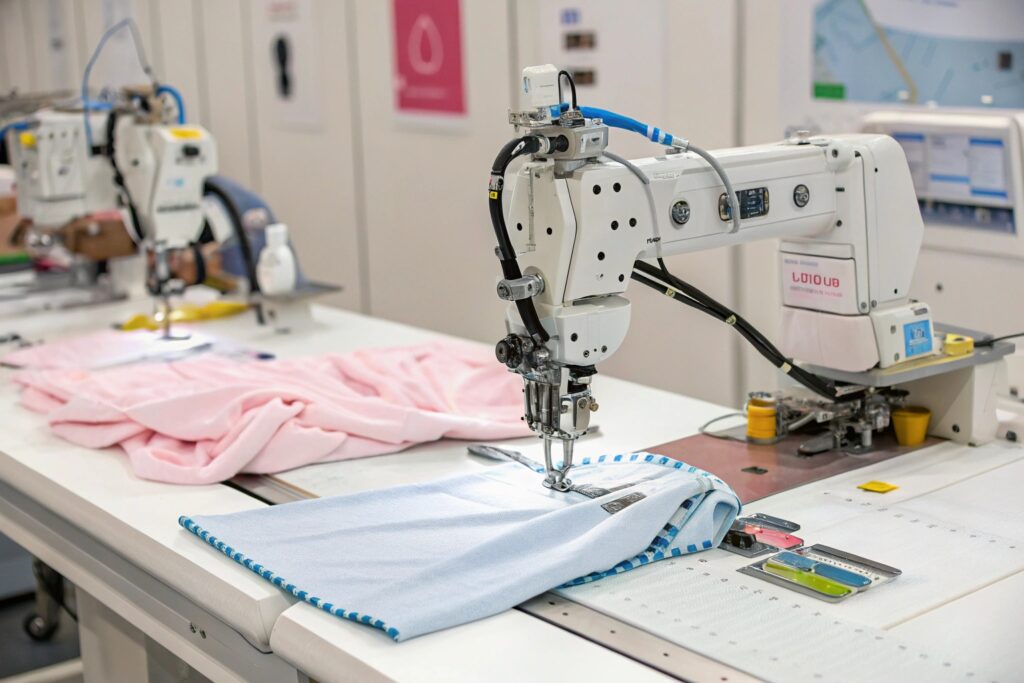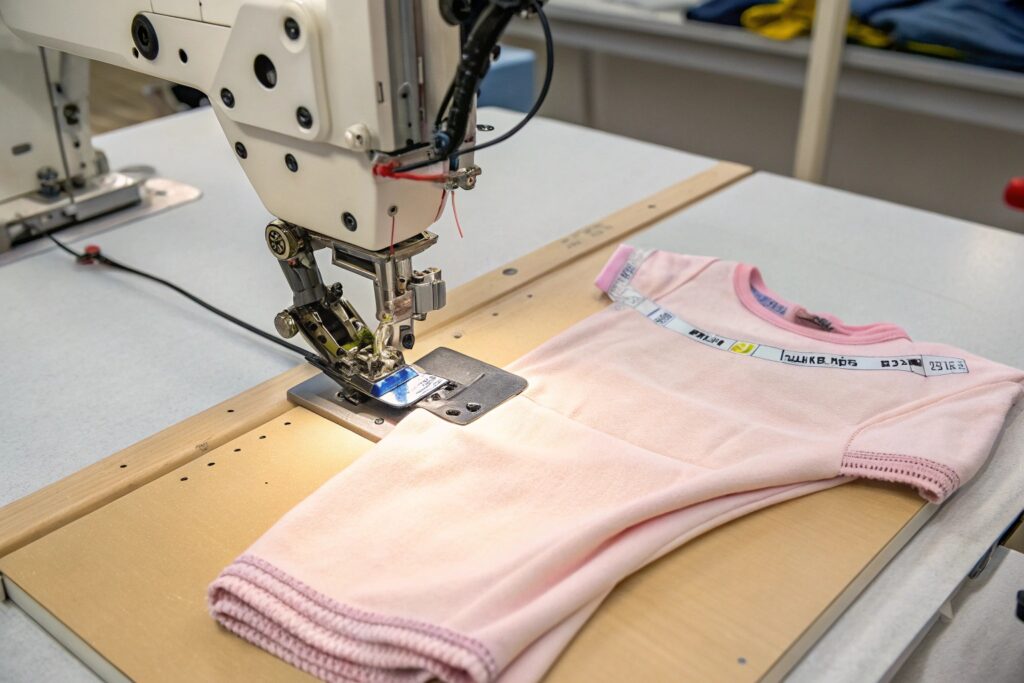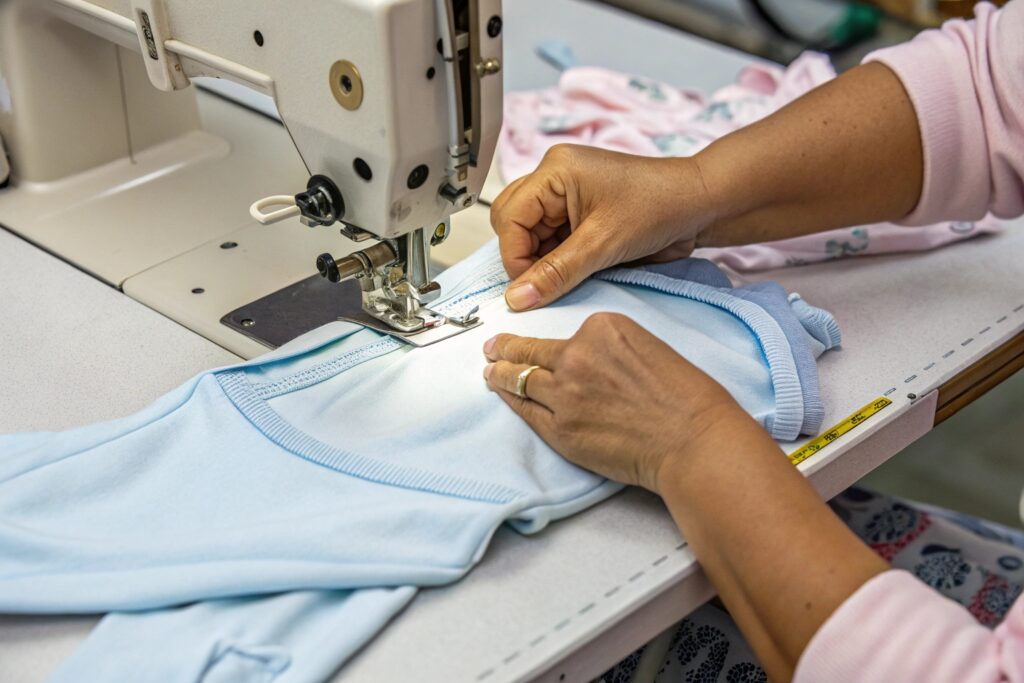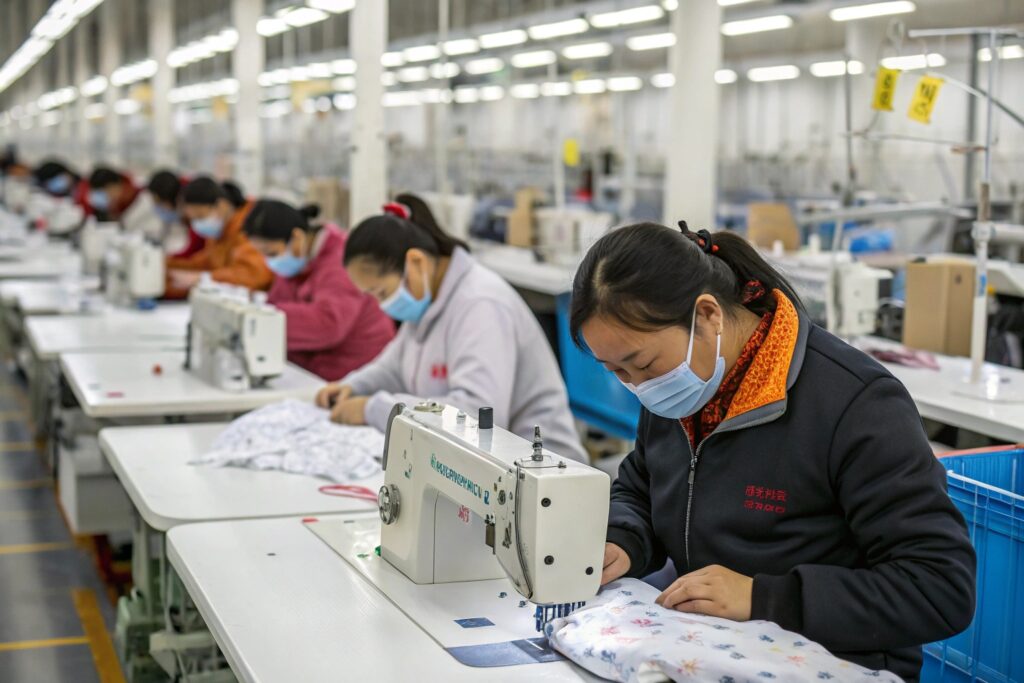From cars to phones, automation has reshaped nearly every industry. So why does sewing still rely so much on human hands?
Clothing manufacturing hasn’t been fully automated because fabric is flexible, unpredictable, and requires complex handling. Robotics and AI still struggle with sewing’s precision and adaptability.
Automation works best with rigid materials. But clothing is soft, shifting, and stitched in layers—making machines much slower than skilled humans.
Challenges of Automating Garment Manufacturing
We live in a world of smart factories and AI assistants. But step into a clothing production line, and you’ll still find rows of operators sewing by hand.
The biggest challenge in automating garment manufacturing is fabric’s unpredictable nature. Machines struggle to handle its flexibility, shifting behavior, and the fine motor control needed for stitching.

What makes fabric more difficult to automate than other materials?
Unlike metal or plastic, fabric bends, stretches, and folds under pressure. Even small wrinkles can throw off a robotic stitch. To automate garment production, a machine must:
- Detect the exact edge of a fabric panel
- Adjust grip strength based on material thickness
- Respond instantly to stretch or slide
- Align seams without puckering
This isn’t easy. A robot arm needs complex sensors, flexible grippers, and lightning-fast feedback loops just to mimic a single human motion. And it still can’t match the speed or subtlety of a trained operator.
At Fumao Clothing, we’ve tested several semi-automated machines for hemming and overlocking. They work for straight seams but struggle with curves or fabric layering—two areas that are common in kidswear or custom garments.
How does the wide variety of garment designs block full automation?
No two garments are exactly alike. Even in bulk production, small size variations or fabric types require different stitch lengths, thread tensions, or attachment methods.
Compare these examples:
| Garment Type | Automation Compatibility |
|---|---|
| T-shirts (basic) | High – simple shape, fewer seams |
| Dresses (layered) | Low – complex draping, zippers |
| Denim jeans | Medium – tough fabric, precision needed |
| Infant bodysuits | Low – curved seams, snap buttons |
Custom styles with ruffles, elastic bands, or pleats need constant adjustments. A human can switch techniques in seconds. A robot? It must be reprogrammed, recalibrated, and tested again.
This is why clothing factories still depend on human-led sewing—even as cutting, labeling, and packing become more digital.
Why Sewing Robots Still Face Major Limitations
It’s not that robots can’t sew—it’s that they can’t sew like humans. Stitching requires speed, adaptability, and sensitivity that machines are just beginning to understand.
Sewing robots are limited by high costs, technical constraints, and the difficulty of controlling soft materials. They also lack the fine motor intelligence required for real-time fabric handling.

What’s the technical gap between human and robot sewing?
A skilled sewing worker can adjust for every twist, misalignment, or fabric bump mid-process. Their hands provide real-time sensory feedback, adjusting stitch pressure, feed speed, and hand tension.
A robot, however, needs to pre-calculate all of that in advance. If something shifts mid-stitch, it stops—or ruins the garment.
Key limitations include:
- Lack of visual judgment: Cameras still can't fully read how fabric folds in 3D.
- Gripper fragility: Most robotic arms are too stiff or too weak to handle delicates.
- Feedback delay: Sensor lag means the robot can’t adapt quickly enough.
- High training cost: Each new garment requires extensive reprogramming.
We explored using a prototype from Sewbo—an American startup that stiffens fabric with a water-soluble solution to let machines handle it like a sheet of plastic. It works, but the time spent applying and washing out the stiffener offsets the efficiency gain.
Why do robot-based sewing solutions remain expensive and niche?
Cost is a major barrier. A skilled sewing machine operator in Asia may cost $400–600/month. A sewing robot system? Upwards of $40,000, plus ongoing maintenance, custom integration, and long lead times.
Here’s a comparison:
| Factor | Human Operator | Sewing Robot System |
|---|---|---|
| Cost per month | ~$500 | $3,000+ (equipment + upkeep) |
| Setup time | 1 day (trained) | 1–2 weeks (calibration) |
| Adaptability | Very high | Low |
| Average error rate | <5% | Variable |
Until robots can outperform humans in quality, speed, and price—buyers like Ron (and myself) prefer trained workers backed by lean production setups.
Human Skill vs Automation in Apparel Production
In an age of AI and smart factories, humans still outperform machines in fashion. The reason? Sewing is still as much an art as a science.
Human skill offers flexibility, speed, and quality that machines can’t yet replicate. Sewing involves sensory judgment, real-time decision-making, and touch—all areas where humans lead.

How do humans outperform robots in apparel craftsmanship?
Whether it’s attaching a delicate collar or sewing a curved sleeve, human touch matters. A person can feel if a fabric is stretching wrong. They can make micro-corrections before the issue spreads.
Some examples:
- Elastic waistbands: Require careful stretching while stitching—robots often break threads or sew unevenly.
- Embroidered badges: Need precise positioning and stitch anchoring.
- Soft trims: Need gentle handling or they warp.
In Fumao Clothing’s factory, our top operators can finish a complex blouse 30–40% faster than our best semi-automated system—and with far fewer defects.
Clients in premium fashion care about detail. Automation can't yet handle that level of finesse.
Why are sewing skills still critical for custom and small-batch orders?
Automation thrives on repetition. But fashion buyers often ask for:
- Custom logo placements
- Limited-edition runs
- Fast trend responses
These require daily changes in the line—new tech packs, fabric changes, updated trims. A human worker can pivot instantly. An automated line can’t.
For instance, when we receive a rush order from a brand buyer in LA with specific label placements, only a skilled line can guarantee speed and precision in 72 hours. Robots aren't built for that—yet.
How Tech Is Slowly Changing Clothing Factories
Change is happening, even if it's slower than other industries. Factories are adopting automation in certain areas while keeping humans at the core of sewing.
Technology is reshaping apparel factories through smart cutting machines, AI-powered QC, and data-driven planning. Full sewing automation remains limited, but hybrid workflows are emerging.

What parts of garment production are already automated?
Here’s where automation already plays a strong role:
| Area | Degree of Automation |
|---|---|
| Fabric spreading | High (spreading machines) |
| Cutting | High (laser or die-cutters) |
| Label printing | High (digital print systems) |
| Packing & folding | Medium to High |
| Sewing | Low |
At Fumao, we use automatic fabric cutters for bulk orders. They save material and speed up pre-production. Our digital labeling system also integrates with ERP to sync order data.
One area seeing rapid growth is AI-based QC. Cameras now scan garments during production, flagging skipped stitches, uneven hems, or missing labels. This cuts down end-line inspection time by 30%.
What innovations could soon make sewing more automated?
Several projects are pushing boundaries:
- Sewbo: Uses fabric stiffeners for robotic sewing
- SoftWear Automation: AI-driven vision systems to guide stitches
- Digital twin software: Simulates garment construction before production
- 3D-knitting: Like Shima Seiki machines, that knit entire garments without sewing
These aren’t ready for full-scale replacement yet. But paired with human operators, they boost efficiency and reduce rework.
At Fumao Clothing, we’re actively testing AI-guided SPI counters and exploring automatic hem folders for t-shirts. It’s not full automation—but it's smarter sewing.
Conclusion
We haven’t automated clothing production yet because sewing is flexible, complex, and deeply human. But technology is moving us closer. Smart tools, not full robots, are leading the way.










